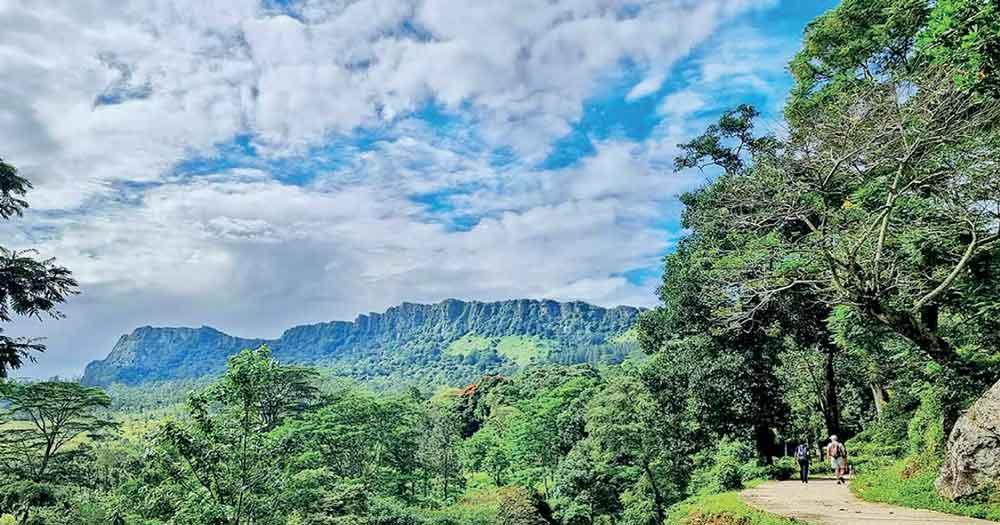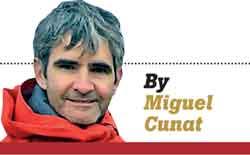01 Jan 2025 - {{hitsCtrl.values.hits}}

The Pekoe Trail is a 300+km walking trail traversing the central highlands of Sri Lanka (Image courtesy The Pekoe Trail )
 Over the past decade, as the founder of the Pekoe Trail, I’ve been fortunate to witness Sri Lanka’s incredible potential to become a global leader in sustainable tourism. It has been a journey of discovery, not just in mapping out a 300-kilometer trail through the island’s stunning tea country but in understanding the deeper impact tourism can and should have on people, communities, and the environment. Designing the Pekoe Trail wasn’t just about connecting places; it was about creating meaningful connections between travellers and the world around them. Here’s what I’ve learned along the way.
Over the past decade, as the founder of the Pekoe Trail, I’ve been fortunate to witness Sri Lanka’s incredible potential to become a global leader in sustainable tourism. It has been a journey of discovery, not just in mapping out a 300-kilometer trail through the island’s stunning tea country but in understanding the deeper impact tourism can and should have on people, communities, and the environment. Designing the Pekoe Trail wasn’t just about connecting places; it was about creating meaningful connections between travellers and the world around them. Here’s what I’ve learned along the way.
 Tourism, at its best, is a transformative experience. It has the power to foster personal growth, cultural understanding, and a profound sense of tolerance. Sri Lanka is uniquely positioned to offer such transformative experiences. Our landscapes and our people provide an unparalleled opportunity to create a space for personal growth—a space where travellers not only explore but also connect deeply with the places they visit. Over the years, I’ve come to realize that high-value tourism isn’t defined by how much a traveller spends or by luxury accommodations. Instead, it is about the traveller’s intentionality—their choice to prioritize sustainable suppliers and consciously design itineraries that create a positive impact on communities and conservation efforts.
Tourism, at its best, is a transformative experience. It has the power to foster personal growth, cultural understanding, and a profound sense of tolerance. Sri Lanka is uniquely positioned to offer such transformative experiences. Our landscapes and our people provide an unparalleled opportunity to create a space for personal growth—a space where travellers not only explore but also connect deeply with the places they visit. Over the years, I’ve come to realize that high-value tourism isn’t defined by how much a traveller spends or by luxury accommodations. Instead, it is about the traveller’s intentionality—their choice to prioritize sustainable suppliers and consciously design itineraries that create a positive impact on communities and conservation efforts.
High-value tourism doesn’t happen by chance. It requires careful design. The Pekoe Trail taught me the importance of taking people off the beaten path and showing them the richness of rural Sri Lanka—the small villages, the untold stories, the hidden biodiversity corridors. These experiences not only delight travellers but also ensure tourism dollars reach grassroots communities. I’ve learned that when tourism uplifts the people who needs it most, it creates a ripple effect of positivity. The key is designing experiences that foster authentic connections, where visitors leave with memories and a sense of contributing to something bigger.
Metrics matter, too. As the trail developed, I became acutely aware of the importance of listening to both local communities and travellers. Tools like the Doxy Index, which measures local sentiment towards tourism, and the Net Promoter Score (NPS), which gauges visitor satisfaction, became essential. If visitor numbers grow but these scores decline, something is wrong. Tourism must work for everyone—the host communities, the environment, and the visitors—if it’s to be truly sustainable.
This leads me to another critical lesson: Sri Lanka must move away from volume-driven mass tourism. Targeting diverse market segments—whether they’re wellness travellers, adventure enthusiasts, or cultural explorers—is the path forward. But more importantly, we need to redefine what success in tourism looks like. It’s not about five-star hotels or exclusive resorts; it’s about creating experiences rooted in truth and tradition. The Pekoe Trail, for instance, isn’t just a hiking route—it’s a story of Sri Lanka’s tea heritage, its biodiversity, and the resilience of its communities. Authenticity is what resonates with travellers today. One of the biggest challenges I’ve faced is addressing the gaps in infrastructure. Clean water, waste management, and sustainable accommodations are non-negotiables for the kind of tourism we want to build. These aren’t just logistical issues; they’re a reflection of how committed we are to preserving the natural beauty that makes Sri Lanka special. The government and private sector must work hand-in-hand to address these challenges, with a green and clean ethos guiding every step.
I’ve also drawn inspiration from global examples. Costa Rica’s eco-tourism model, Bhutan’s “Happiness Index,” and Turkey’s mandatory sustainability certifications all offer valuable lessons. But what I’ve realized is that we don’t need to copy these models; we need to create a Sri Lankan version that aligns with our unique strengths and challenges. Public-private partnerships have been critical to the Pekoe Trail’s success, and I believe they are essential for Sri Lanka’s broader tourism strategy.
A final and deeply personal insight is about people. Over the years, I’ve seen the toll that economic hardships and the brain drain have taken on Sri Lanka’s tourism sector. Retaining skilled talent is critical, but it’s equally important to empower more women to join the workforce. Many of the most impactful moments on the Pekoe Trail come from interactions with local women—guides, artisans, tea pluckers —and I believe their involvement is key to tourism’s future. Diversity in the workforce isn’t just a social goal; it’s a practical necessity for resilience and innovation.
Designing the Pekoe Trail has been one of the most rewarding experiences of my life. It has shown me that tourism isn’t just about movement—it’s about meaning. If Sri Lanka can embrace high-value tourism, focusing on impact, authenticity, and inclusivity, it can create a model that not only enriches travellers but also transforms the nation. The lessons I’ve learned over the past decade are just the beginning. The journey continues, and I can’t wait to see where it takes us next.
The writer is the brainchild behind The Pekoe Trail expedition.
04 Jan 2025 3 hours ago
04 Jan 2025 3 hours ago
04 Jan 2025 3 hours ago
04 Jan 2025 5 hours ago
04 Jan 2025 5 hours ago